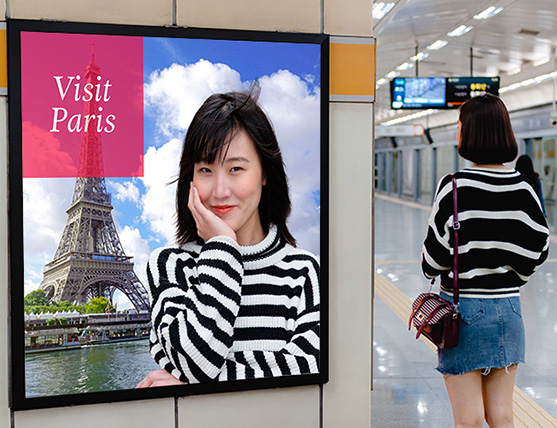It's Not You, It's Me
Why Emotional Advertising is Important for DMOs

Previously we had mentioned how Visit Vilnius used an absolutely hilarious campaign to memorably market their often-overlooked destination. The YouTube video ramped up over 1 million views, and the comments section flooded with praise and positivity. The aspects and direction of this ad made people think about the somewhat cringy ads of the 80’s and 90’s. The memory of what we used to think was “cool” couldn’t help but bring laughter now and make the audience feel joyful and nostalgic. Most of Vilnius’s target audience is Western Millennials, and in this case, they appealed to this audience perfectly.
Emotional content (i.e., content that provokes an emotional response) is the strongest way to persuade someone in marketing. According to research, ads that leverage human emotion are roughly twice as effective as those that stick to more traditional tactics.
Why is this information important to know? Because in today’s oversaturated market, many tourism destinations are unfortunately still implementing the same marketing tactics as the days of postcards. Ads that show scenic views and informative content, but nothing that differentiates them from other similar destinations. The truth is, people want to see more than surface-level, perfectly put-together ads. They need to emotionally relate to the content that is being shown. While that doesn’t mean your DMO should necessarily make a humor-filled nostalgic ad, it does mean that in order for your ads to resonate with travelers, they need to satisfy an emotional need of your audience.
Know Your Audience
As with the beginning of any marketing campaign, research should be an integral part of the brainstorming process.
If your destination is noticing an increase in people traveling for work, you may want to try creating incentive opportunities or messaging around prolonged or weekend stays for business travelers. If you see an increase in Generation Z tourists, you might want to increase your digital space marketing and offer promotions for activities targeted at a younger crowd. Whatever the case may be, you want to make sure you know who you are targeting first before you create a campaign.
Secondly, by using these general demographics as a foundation, you want to dive deeper into the psychological aspects of your targeted audiences.
For example, business travelers may have more money to spend, so that gives you your first surface layer of the campaign—high-end spending opportunities. But business travelers also appreciate “after-hours” activities—things that can be done after work or after meetings with little planning effort. So, some emotional aspects of the campaign should include:
- Comfort
- De-compressing/De-stressing
- Relaxation
- Diversion
By knowing what your audience wants to feel, you can then market the right solution. In this case, a business traveler wants to have the opportunity to decompress after a completed business trip or tasks, and by providing content that feeds that emotion, you can better influence a decision to stay for a long weekend at your destination.
Produce Relatable Ads
Now that you know who your audience is, you want to produce ads that are tailored to the emotional response you wish to produce in that audience. Even though the ad itself may be linked to a certain emotion, you still want to make sure it relates to your audience.
Still using the example of a business traveler who wishes to feel comfort, relaxation, etc., showing an ad for a 4.5-star spa may not be the type of “unwinding” this tourist is able to relate to. They’d have to book an appointment, be in the spa for hours, and also not be able to enjoy the more “scenic” aspects of your destination. Can they afford it? Yes. Can this ad produce an emotional response of comfort and relaxation? Yes. Is it relatable? Not necessarily. The fact of the matter is that a business traveler needs something a bit more lowkey, something they can do after work hours, without much planning, and overall be a little less formal. Most importantly, you want the experience to feel solely linked to your city, and not some chain spa that they can find elsewhere.
Always make sure the ads you show are relatable to your audience. In this case, perhaps a nice sunset shot of main street restaurants would do the trick. You have to think like your audience because if they can truly envision themselves in these ads, then the emotional response produced will be much deeper and satisfying.
Let the Customer Do the Talking
Rather than guessing what the audience wants, creating opportunities for the audience to tell you what they actually want is the best way to produce effective content and ads that provoke an emotional and relatable feeling.
Social media is one great way to not only collect data and information about your destination’s perceived view, but also collect and re-share real-life testimonials. From pictures to tweets to Instagram’s “Places,” you can see what people find interesting and enjoyable (or not enjoyable) enough to post about to their friends, families and followers.
Know how to read this information and apply it to your next campaign. Ask yourself these questions:
- Who are the people visiting my destination? What are their demographics?
- What are people talking about or which places are people visiting the most?
- What activities seem to be the most popular?
- What subjects are people posting about the most (architecture, landscapes, dining, shopping experiences, etc.?
- What styles and moods of imagery are you noticing more? Adventurous, lowkey, romantic, whimsical, etc.
Answering these questions can help you create a campaign that appeals your destination’s audience.
These answers provide inspiration to create new ads, but sometimes the ads themselves are already there for the taking. Utilizing what people have already published and praised is a good way to influence a genuine emotional response. Visit Cancun is a prime example of this strategy. With no other tactics in place, their only marketing comes from reposting pictures from other accounts. Real people, real places, candid and enticing. This amazing content didn’t come from a thousand-dollar photo shoot, but from the people actually visiting their destination.
If you feel limited in this sense (after all, not everyone is as popular as Cancun), you should create opportunities for insight. Start a hashtag that encourages people to share certain experiences in your destination. Boost or promote content to create a stronger online presence for your destination’s account. Encourage online interaction, such as commenting, leaving reviews and or entering a sweepstakes contest. This way, you can hear, see and understand first-hand what the emotional needs of your audience really are.
Ready to renovate your marketing plan? Emotional content marketing should be at the top of your to-do lists. Instead of opting for more traditional, generic and or “safe” marketing, make it your priority to touch people’s emotions. Do the research on who it is you really are marketing to—whether that is Millennials who want humor-filled ads that make them feel happy, or business travelers looking to kick back and feel relaxed, you need to know what the emotional needs of that audience are. Once you know who your audience is, then you can start to produce ads that speak to them and are relatable. The imagery, language and subject should all align with the emotional response you wish to produce. If you really want to produce content that works, look at what people are already saying about your destination and include that into your marketing strategy. The best way to produce emotional content that works is by including the experiences and emotions that your audience is already feeling instead of trying to create new ones.
Need help developing creative, relatable and emotional content that’s effective? Contact our Chief Business Development Officer, John Albert, at john@herrmann.com to see how Herrmann can help your DMO’s next campaign.


